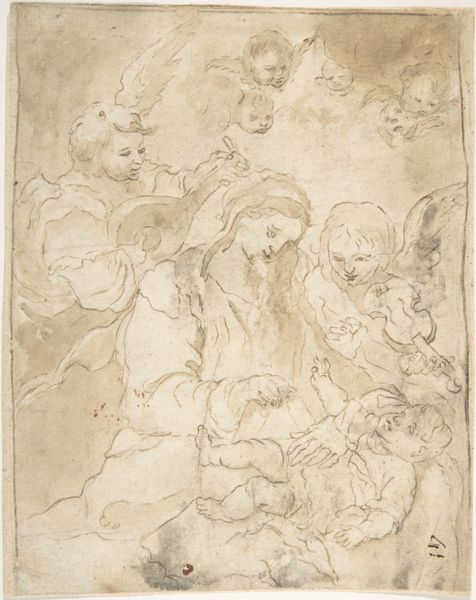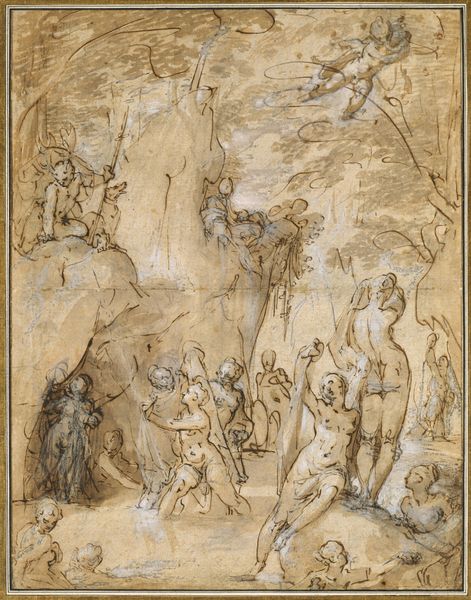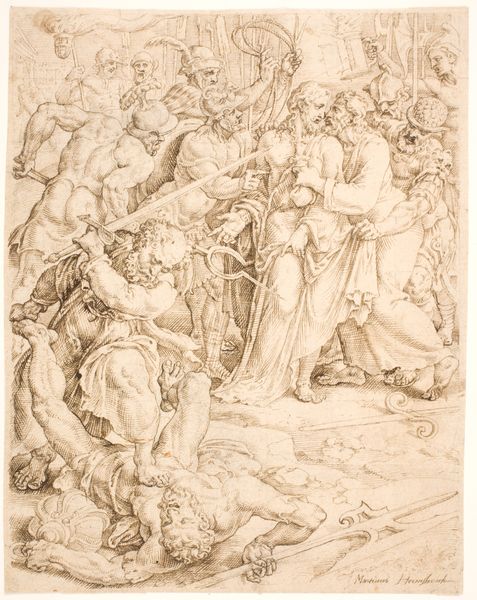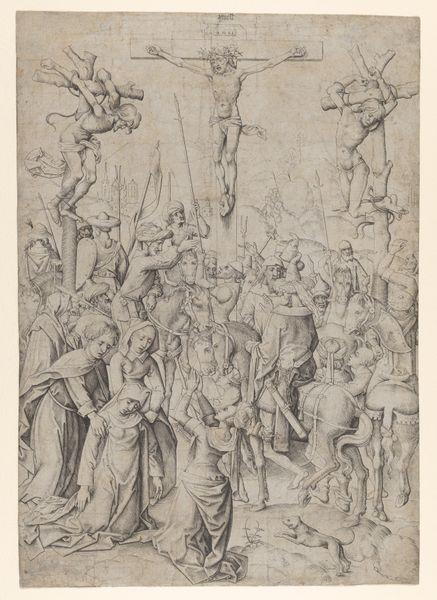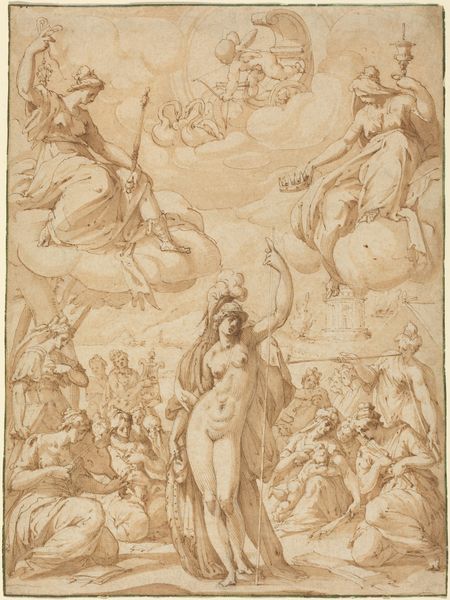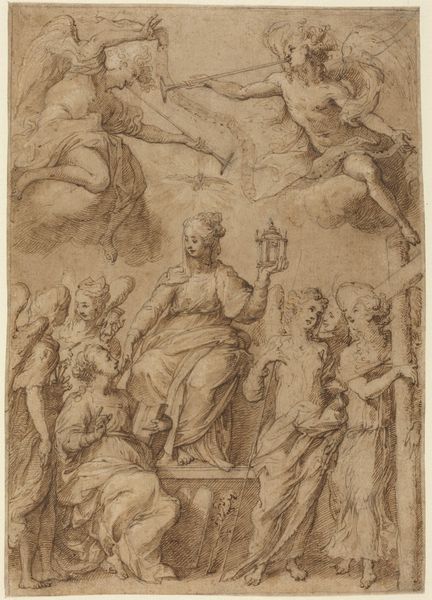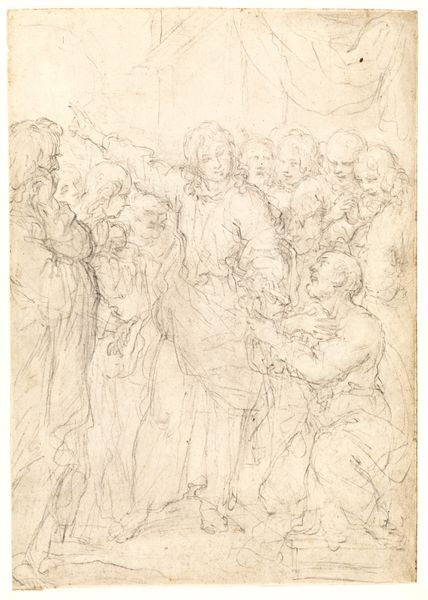
drawing, print, paper, ink, pen
#
drawing
# print
#
figuration
#
paper
#
ink
#
pen
#
history-painting
#
italian-renaissance
Dimensions: 208 × 163 mm
Copyright: Public Domain
Editor: Here we have "Ascension of Christ," an ink drawing by Giulio Cesare Angeli. It feels…unfinished, almost like a snapshot of an idea in progress. There's a rawness to it. How do you interpret this work, especially considering its historical context? Curator: Precisely. This sketch is a fascinating document of artistic process within the Italian Renaissance, but also a snapshot into the evolving role of religion within society. Consider, who typically got to ascend, literally and metaphorically, during this time? Think about access to power, knowledge, resources – did everyone have the same shot? This drawing becomes less about solely religious piety, and more about these very real hierarchies. Editor: So, you're suggesting that even a religious scene like this can subtly reflect societal inequalities? Curator: Absolutely. Note how the figures below Christ strain upwards. Are they hopeful? Envious? Or perhaps, even despairing knowing they can't follow him? Also, Angeli's loose lines create a sense of movement, but also instability, reflecting perhaps the tremors of social change rumbling beneath the surface of Renaissance society. Editor: That’s a powerful way to look at it. I never considered the composition itself as potentially speaking to social mobility, or the lack thereof. Curator: It is a useful way to see that art doesn’t exist in a vacuum, and we must remain critical. The work encourages us to question whose stories get told and how they're framed. And, isn’t that the duty of the conscientious art observer? Editor: Definitely something to ponder! It's really opened my eyes to the layers of meaning within even seemingly straightforward religious art. Curator: I agree. Examining how art intersects with social realities is critical to understand our shared human experiences.
Comments
No comments
Be the first to comment and join the conversation on the ultimate creative platform.


